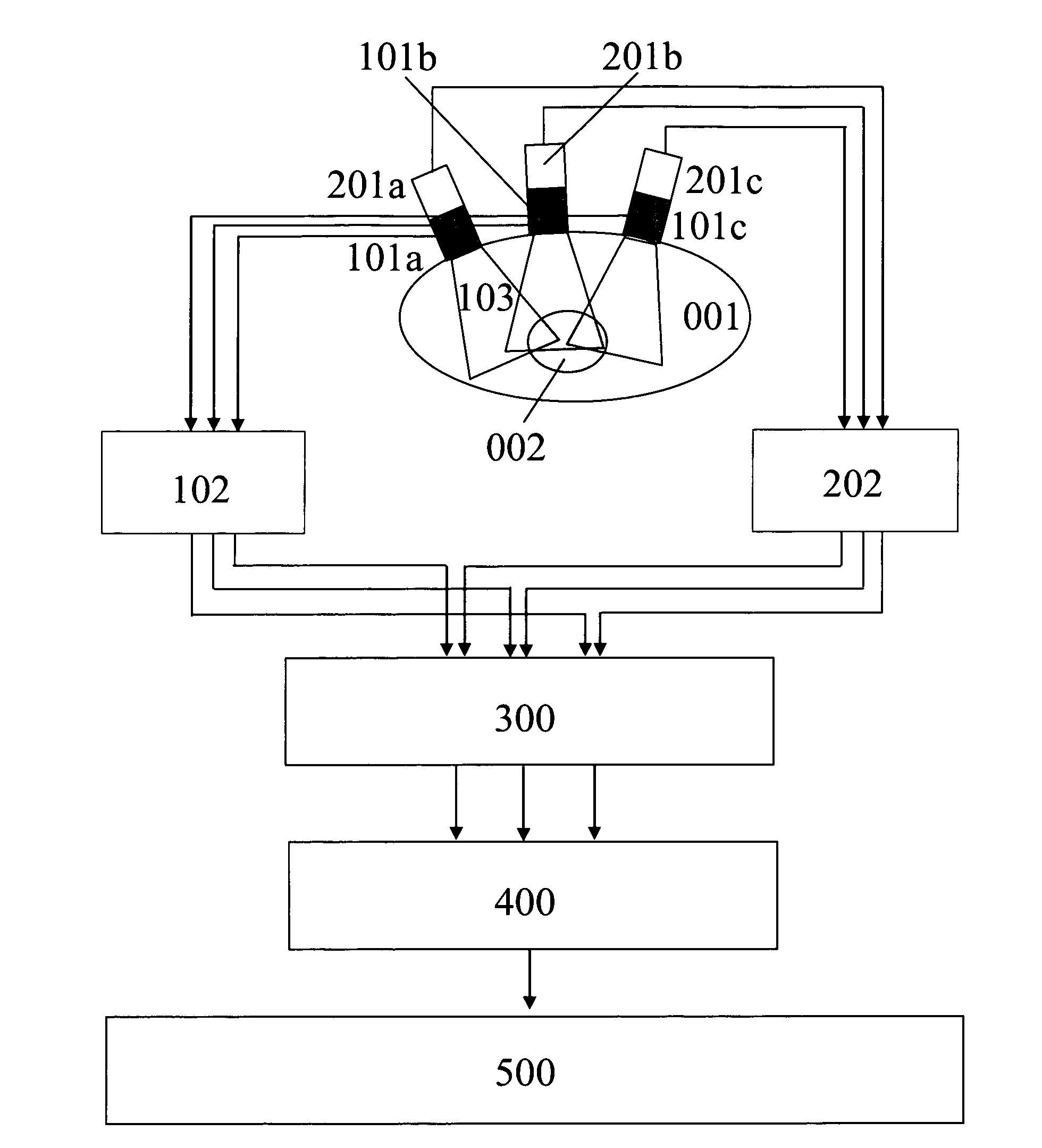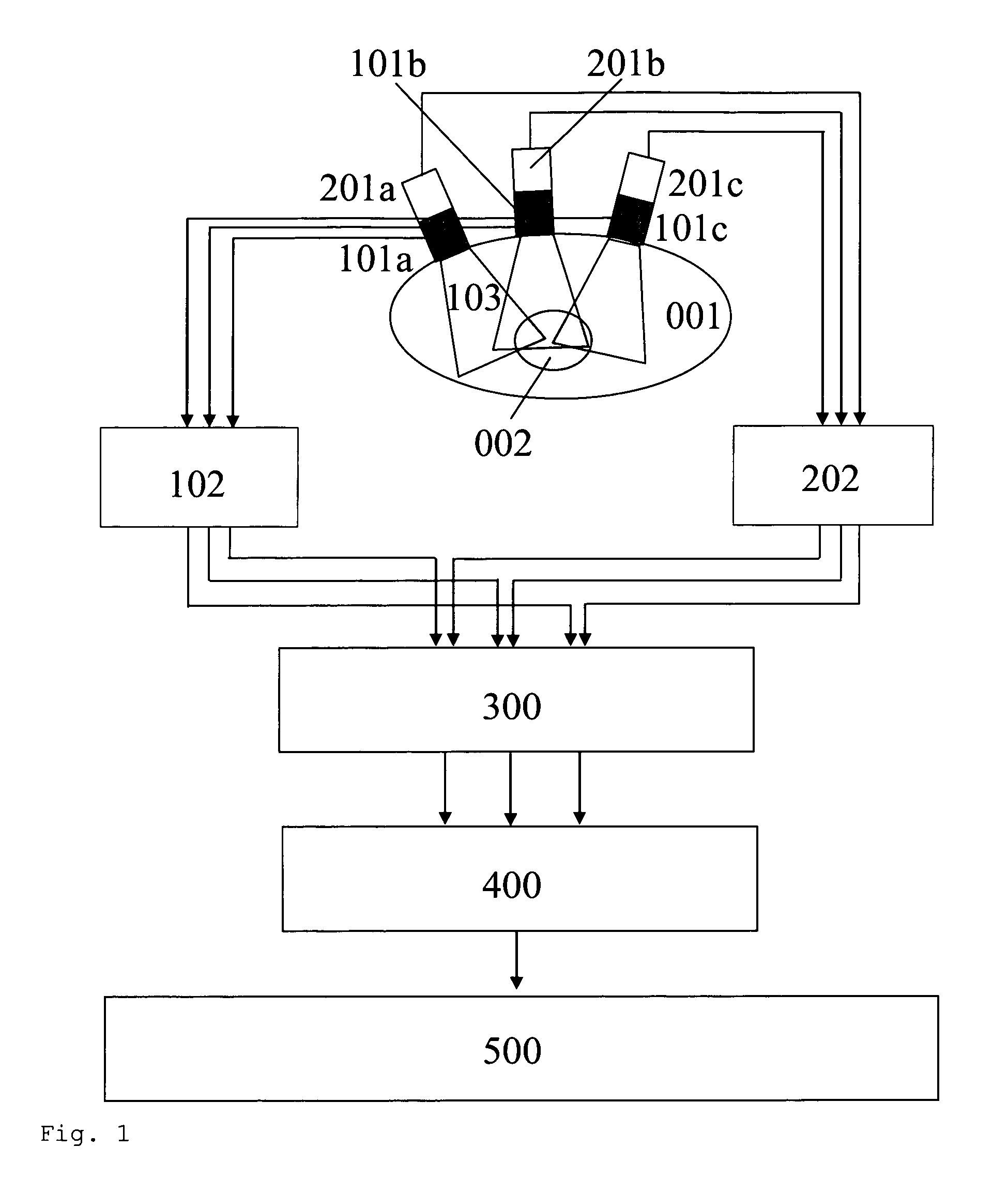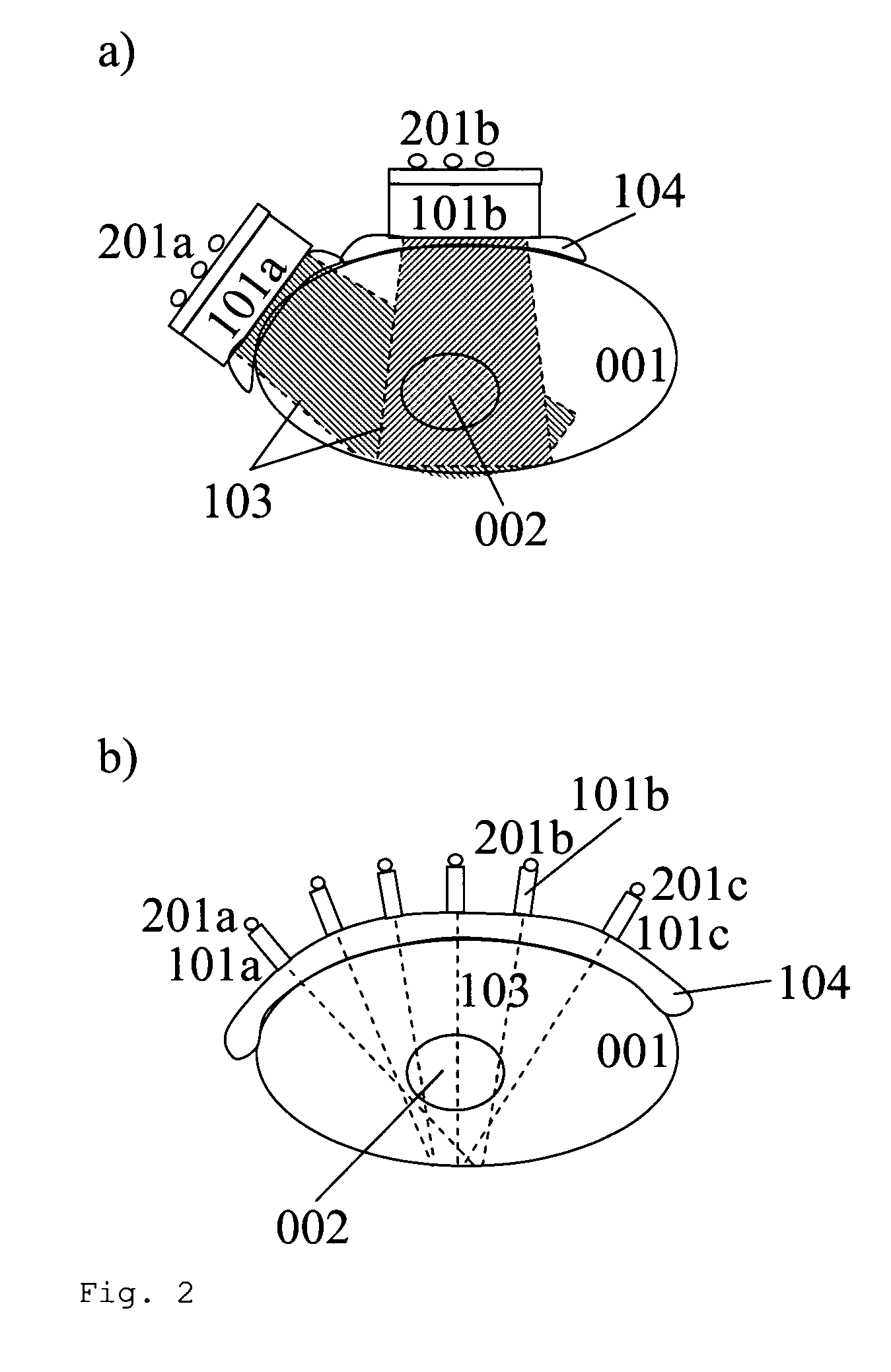3D motion detection and correction by object tracking in ultrasound images
a technology of object tracking and motion detection, applied in the field of ultrasound imaging, to achieve the effect of increasing the precision of determined motion, acceleration and/or ankle information, and increasing the accuracy of determined motion
- Summary
- Abstract
- Description
- Claims
- Application Information
AI Technical Summary
Benefits of technology
Problems solved by technology
Method used
Image
Examples
Embodiment Construction
[0078]As delineated in FIG. 1, a preferred embodiment of the claimed invention comprises the following components:[0079]a) an ultrasound unit 102 (including a transmit and receive unit) providing structural and / or physiologic data in real-time;[0080]b) one or more one 1D (one-dimensional), 2D (two-dimensional) or 3D (three-dimensional) ultrasound transducers 101a, 101b, 101c coupled to the ultrasound unit 102 to provide linearly independent (i.e. acquired from different directions, in multiple non-coplanar planes or non-collinear lines) sparse or complete 3D ultrasound data. The ultrasound transducers 101a, 101b, 101c can be pasted directly to the body 001 or be mounted to the body 001 in a different way. Furthermore, they can be either fixed with respect to the reference frame or float freely;[0081]c) a system 201a, 201b, 201c, 202 to continuously determine the localization and viewing direction of each ultrasound transducer 101a, 101b, 101c relative to a fixed frame of reference;[...
PUM
 Login to View More
Login to View More Abstract
Description
Claims
Application Information
 Login to View More
Login to View More - R&D
- Intellectual Property
- Life Sciences
- Materials
- Tech Scout
- Unparalleled Data Quality
- Higher Quality Content
- 60% Fewer Hallucinations
Browse by: Latest US Patents, China's latest patents, Technical Efficacy Thesaurus, Application Domain, Technology Topic, Popular Technical Reports.
© 2025 PatSnap. All rights reserved.Legal|Privacy policy|Modern Slavery Act Transparency Statement|Sitemap|About US| Contact US: help@patsnap.com



